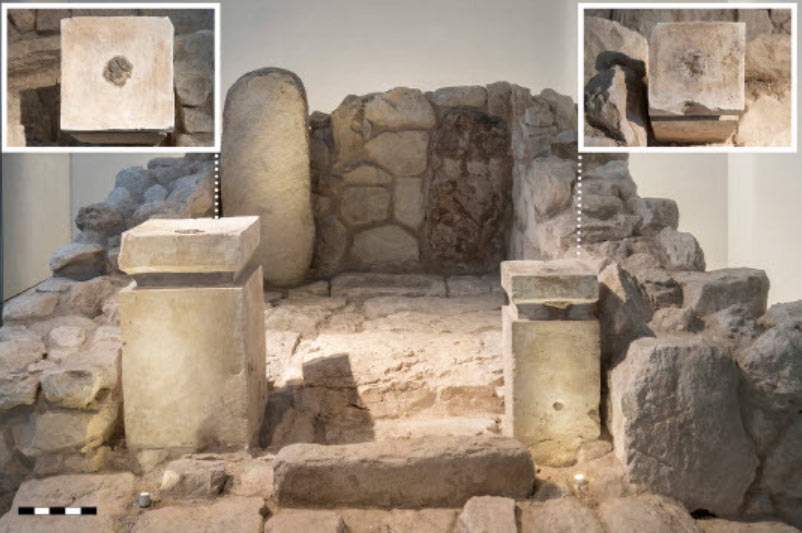Research conducted by three Israeli archaeologists (Eran Arie, Baruch Rosen and Dvory Namdar) has uncovered an important discovery: ancient Jews used cannabis for ritual purposes during religious ceremonies. Or at least, that was the case in the small temple in Tel Arad (Israel), where remains of materials found on two limestone altars were analyzed (by two independent laboratories). On one of the two, the smaller one, traces of cannabinoids such as THC, cannabidiol and cannabinol were found, along with traces of terpenes: the scholars therefore had an easy time hypothesizing that cannabis inflorescences were burned on the altar. Along with the traces of cannabinoids, residues of manure were also found, which allowed the cannabis to burn at a lower temperature, so as to activate its psychoactive principles: this clue also concurs with the suggestion that cannabis plants were burned specifically to reach an altered state.
The other altar, the larger one, revealed traces of terpenes derived from frankincense, a resin obtained from plants of the genus Boswellia and used to make incense and perfumes: the presence of residues of animal fat on the same altar made it possible to discover that, again, the substance was burned, in order to flood the temple with its fragrance.
The discovery of frankincense is the first of its kind in a Levantine context, but it did not cause a stir, since the use of this essence is also mentioned in the Bible (and, as is well known, frankincense is one of the gifts that the three Magi bring to baby Jesus), while the discovery of theuse of cannabis for ritual purposes by the ancient Hebrews was a real surprise, since it was the first such discovery: various populations are known to have used cannabinoids in ancient times, but this custom was not known among Jews. “It seems likely,” the scholars write in their research, “that the use of cannabis on the Arad altar had a deliberate psychoactive role. The smell of cannabis is not inviting, and so one would not explain on this basis the importation of the inflorescences from afar. However, the frequent use of hallucinogenic materials for cultic reasons in the ancient Middle East and beyond is well known and goes back as far as prehistory [...]. Psychoactive ingredients were intended to stimulate states of ecstasy as part of the ceremony. And as this study aims to show, 8th century B.C. Judea could be added to the list of places where these rituals were held.”
In addition, archaeologists have also speculated that the use of cannabinoids was institutionalized in some way, since frankincense, and probably cannabis as well, had a very high cost, leading to the suggestion that the fort at Tel Arad was an official institution run by the Kingdom of Judah. Moreover, this is the oldest evidence of cannabis use in the ancient Middle East.
The Tel Arad temple was discovered in the 1960s, during an excavation campaign conducted between 1962 and 1967 by the Institute of Archaeology of the University of Jerusalem and led by archaeologist Yohanan Aharoni: the excavations had led to the discovery of two overlapping fortresses, dating to a period between the 9th and 6th centuries BCE, within which, in 1963, the small sanctuary (measuring 13 meters by 20 meters) that revealed the current discovery had also been found. Although studies on Tel Arad have been going on for fifty years, there is still much to be discovered, and this latest publication proves it.
Pictured: view of the cell in the Tel Arad temple, with a view from above of the two altars (on the left the larger one and on the right the smaller one where cannabis was burned).
 |
| Ancient Jews used ganja in the temple: cannabis use discovered for ritual purposes |
Warning: the translation into English of the original Italian article was created using automatic tools. We undertake to review all articles, but we do not guarantee the total absence of inaccuracies in the translation due to the program. You can find the original by clicking on the ITA button. If you find any mistake,please contact us.